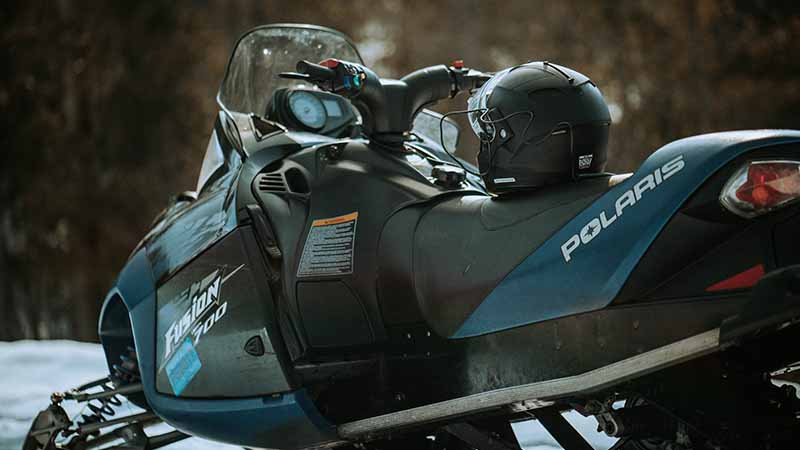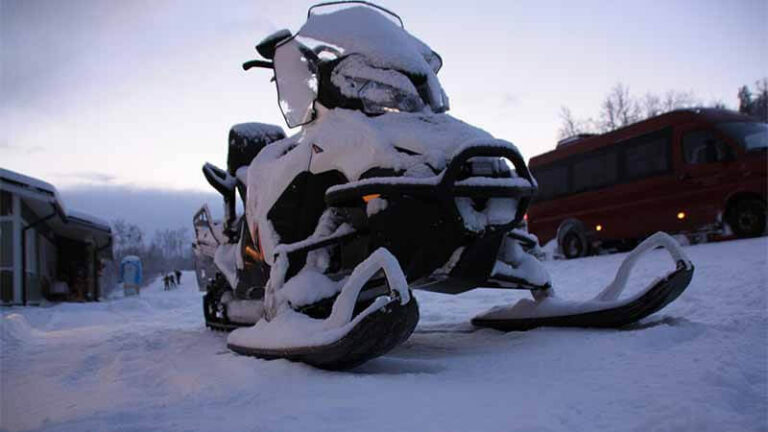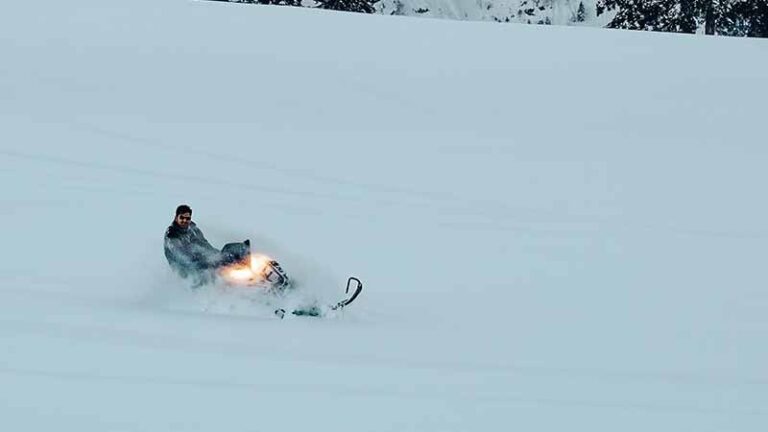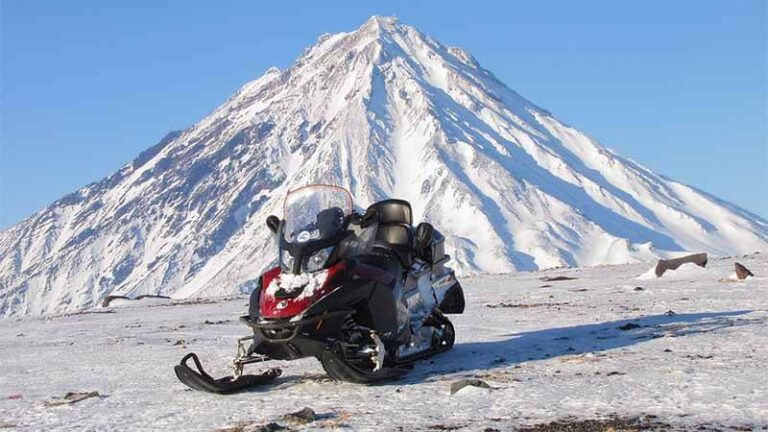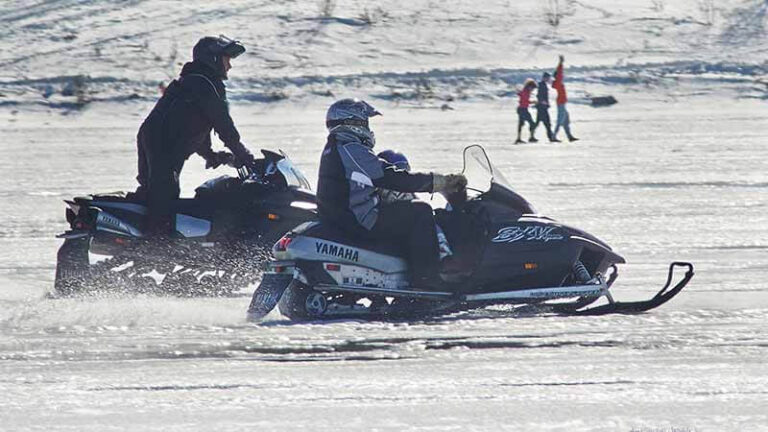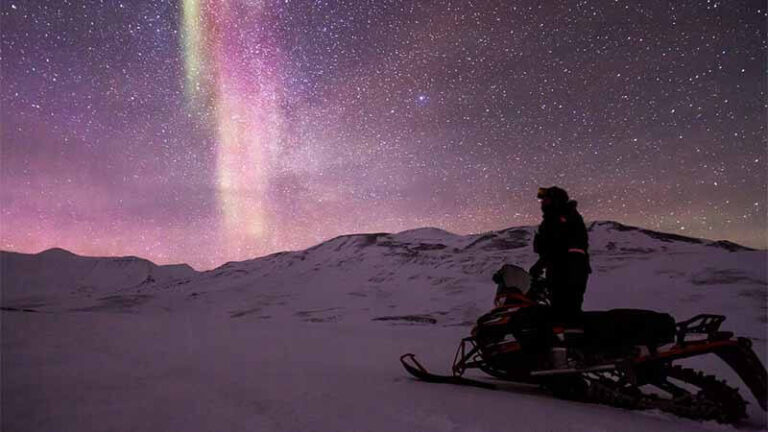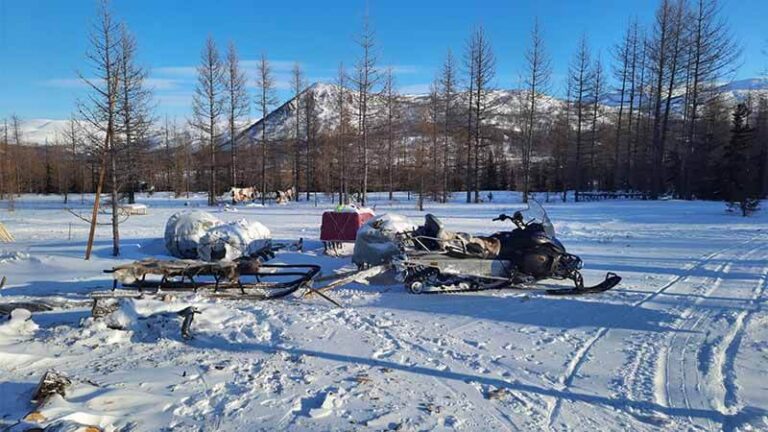How Much Does a Snowmobile Cost?
Snowmobiles are quite popular among winter lovers and explorers. These strong devices, also known as sleds, are built to easily traverse snow-covered terrain, providing a unique and exhilarating way to explore the winter wonderlands.
Snowmobiling is an exhilarating activity that allows riders to glide across wide areas of snow, traverse mountains, and penetrate dense forests. The mix of speed, maneuverability, and magnificent scenery makes an unforgettable adventure. Snowmobiling provides an unparalleled sensation of freedom and thrill, whether racing across frozen lakes, venturing into the backcountry, or simply enjoying a leisurely ride through snowy paths.
Before going on this cold adventure, however, it is critical to evaluate the financial aspects of owning a snowmobile. The cost of a snowmobile is an important consideration that prospective buyers should carefully consider. Snowmobiles are available in a wide range of sorts, sizes, and brands, each with its own price tag. Understanding the financial ramifications will enable you to make an informed selection that fits your budget and tastes.
You can ensure a well-rounded approach to assessing the overall cost of owning a snowmobile by investigating the factors that influence snowmobile costs, weighing the pros and cons of purchasing new or used snowmobiles, considering additional expenses such as accessories and maintenance, and exploring budgeting and financing options.
We will go into each of these variables in the following sections, providing you with the knowledge and insights you need to evaluate how much snowmobile costs and make a purchase decision that matches your financial circumstances and snowmobiling aspirations.
Factors Influencing Snowmobile Costs
Snowmobile Type and Class
Snowmobiles are classified into several categories, each suited for a distinct function and terrain. Understanding the many varieties can assist you in determining the best one for your needs and budget;
- Trail Snowmobiles: These are intended for use on groomed trails and provide a smooth and pleasant ride. They are often the least expensive alternative, with average prices ranging from $6,000 to $12,000.
- Mountain Snowmobiles: Mountain snowmobiles are built with particular features such as deep lug tracks and powerful motors to handle difficult and steep terrains. They are more expensive due to their sophisticated capabilities, ranging from $10,000 to $20,000 or more.
- Crossover Snowmobiles: Crossover snowmobiles combine trail and mountain versions, making them suitable for both groomed and off-road experiences. Crossover snowmobiles are typically priced between $8,000 and $15,000.
- Touring Snowmobiles: These snowmobiles are built for long-distance rides and have more seats and storage. Because of their extra features, touring snowmobiles can cost anywhere from $8,000 to $18,000 or more.
Engine Size and Power
A snowmobile’s engine size and power have a considerable impact on its performance and pricing. In general, larger engine sizes and higher power output imply a higher price.
The most common engine sizes for snowmobiles are 600cc, 800cc, and 1000cc. Snowmobiles with 600cc engines typically cost approximately $7,000 and can cost up to $14,000. Snowmobiles with 800cc engines normally cost between $9,000 and $16,000, while those with 1000cc engines can cost between $12,000 and $20,000 or more.
Keep in mind that due to their enhanced power and specialized components, high-performance versions with turbocharged or supercharged engines may command even higher pricing.
Brand and Model
A snowmobile’s brand and model are important factors in deciding its price. Here are some things to think about:
- Brand Reputation and Popularity: Established brands with a strong reputation and a dedicated consumer base frequently charge a premium for their snowmobiles. This is due to factors like as brand recognition, R&D investments, and the high quality of their products.
- Model Price Variation: Different snowmobile models within a brand may have differing pricing according to their features, performance, and target market. sophisticated versions with sophisticated technologies and extra features are typically more expensive than entry-level or basic models.
- Well-Known Snowmobile Manufacturers: Well-known snowmobile manufacturers include Ski-Doo, Polaris, Yamaha, and Arctic Cat. Prices might vary greatly depending on the brand and model. Entry-level machines from respectable brands may cost over $6,000, while high-performance or specialized variants can cost well over $20,000.
Understanding the impact of snowmobile type, engine size, power, brand reputation, and model variety can give you useful insight into the price range you may expect when buying a snowmobile.
New vs. Used Snowmobiles
Pros and Cons of Buying New
Buying a new snowmobile has various advantages that may appeal to some buyers:
- Guarantee: Purchasing new frequently includes the benefit of a manufacturer’s guarantee, which provides peace of mind and protection against potential faults or concerns. This can save you money on unforeseen repairs over the first several years of ownership.
- New Features and Technology: New snowmobile models usually contain the most recent technological, performance, and safety breakthroughs. You can benefit from greater fuel efficiency, improved handling, sophisticated suspension systems, and upgraded electronics by purchasing new ones.
- Customization Options: When you buy a new snowmobile, you can alter and personalize it to your liking. You can customize the colors, accessories, and extra features to fit your demands, ensuring that your snowmobile matches your personality and needs.
However, it is critical to examine the potential disadvantages of purchasing new:
- Higher Cost: New snowmobiles are often more expensive than used ones. The most recent versions with advanced features and technologies may be more expensive, necessitating a higher initial financial investment.
- Rapid Depreciation: Snowmobiles, like most vehicles, lose value over time. When purchasing a new snowmobile, the first depreciation can be significant, with the value of the snowmobile reducing as soon as it leaves the dealership. If you intend to sell or improve your snowmobile in the future, you need to account for this depreciation.
Pros and Cons of Buying Used
Purchasing a used snowmobile has its own set of benefits and considerations:
- Lower Cost: One of the key benefits of purchasing used is the possibility of significant cost savings. Used snowmobiles are typically less expensive than new models, allowing you to get more bang for your buck.
- Well-Maintained Options: A secondhand snowmobile that has been well-maintained by the previous owner is possible to find. This might deliver a dependable, high-quality machine at a cheaper cost. Thorough research, inspection of the snowmobile, and getting maintenance records may all assist you in identifying well-maintained choices.
However, there are some risks involved with purchasing used:
- Hidden Mechanical or Cosmetic Flaws: Used snowmobiles may have hidden mechanical or cosmetic flaws that are not immediately evident. Before completing a purchase, conduct a thorough inspection or seek professional assistance to find any potential issues.
- Limited Warranty: Unlike new snowmobiles, secondhand snowmobiles may not be covered by a warranty. This implies you could be liable for any repairs or maintenance charges incurred after the purchase. When calculating the entire cost of a used snowmobile, it’s critical to account for prospective repair costs.
You may choose which option best fits your budget, tastes, and risk tolerance by considering the benefits and cons of buying new versus used. Before making a purchase, consider your financial ability, desired features, warranty coverage, and the condition of the used snowmobile.
Additional Costs to Consider
Accessories and Equipment
When evaluating the overall cost of owning a snowmobile, the necessary accessories and equipment must be considered. These devices improve your overall safety, comfort, and snowmobiling experience. Take a look at the following:
- The Importance of Snowmobile Accessories: Snowmobiling necessitates the use of particular equipment to assure your safety and protection. Helmets, goggles, snowmobile suits, boots, gloves, and balaclavas are all necessary gear. These goods provide insulation, visibility, and impact protection, ensuring your safety and comfort while riding.
- Cost Impact: The cost of snowmobile accessories varies depending on brand, quality, and specific features. A conservative estimate of $500 to $1,000 for essential accessories is a decent starting point. However, keep in mind that pricing can vary greatly, especially if you choose premium or specialized equipment.
Maintenance and Repairs
Regular maintenance and minor repairs are required to keep your snowmobile in top shape and extend its lifespan. Understanding the costs involved is critical for budgeting and long-term ownership:
- Routing Maintenance: Snowmobiles, like any other motorized vehicle, require routine maintenance to ensure dependable performance. Oil changes, belt replacements, track adjustments, and routine inspections are examples of such chores. Regular maintenance prevents significant problems and keeps your snowmobile running smoothly all season.
- Routine Maintenance Costs: The cost of routine maintenance varies according to the model, brand, and service provider. As a general rule, budgeting $300 to $500 per season for upkeep is a good starting point. However, pricing may vary depending on the intricacy of the service and any required parts or components.
- Occasional Repairs: Despite routine maintenance, repairs may be required due to wear and tear, accidents, or unforeseen situations. Repair costs might vary greatly depending on the nature of the problem and the components or labor necessary. To avoid future charges, it’s a good idea to set aside a repair budget or consider enrolling in extended warranty coverage.
- The Importance of Cost Accounting: When purchasing a snowmobile, it is critical to factor in continuing maintenance and repair expenditures. Understanding and budgeting for these expenses can help you manage your finances more effectively and guarantee that you can properly maintain the performance and longevity of your snowmobile.
You can have a complete sense of the financial commitment required in owning and maintaining a snowmobile by considering the expenses of accessories, routine maintenance, and occasional repairs in your budget. It is critical to consider these expenditures in order to make an informed selection and have a pleasant snowmobiling experience.
Budgeting and Financing Options
Setting a Budget
Setting a reasonable budget is vital when preparing to buy a snowmobile to guarantee you can comfortably afford the whole cost. Consider the following suggestions:
- Evaluate Your Existing Financial Situation: Assess your existing financial situation, taking into account your income, spending, and savings. Determine how much you can safely spend on purchasing and owning a snowmobile without putting your finances at risk.
- Examine the Total Cost: It’s critical to examine not only the initial purchase price, but also the extra costs we stated before, such as accessories, maintenance, and repairs. Take these recurring costs into account to get a better understanding of the long-term financial commitment.
- Research Snowmobile pricing: Look into the average pricing of snowmobiles that fit your specifications. Compare prices across brands, models, and types to determine the price range that fits your budget.
- Consider Depreciation: Snowmobiles, like all other vehicles, depreciate over time. When calculating the long-term cost of your snowmobile, consider its possible resale value.
Financing Options
If you can’t afford to buy snowmobile cash or wish to spread the expense over time, there are several financing alternatives available. Take a look at the following:
- Personal Loans: You can finance your snowmobile purchase with a personal loan from a bank or credit union. Shop around for the best interest rates and payback conditions. It is critical to comprehend the loan’s terms, including interest rates, repayment periods, and any associated expenses.
- Dealership Financing: Many snowmobile dealerships give their clients financing alternatives. These financing options frequently include attractive interest rates and simple application processes. However, read the details carefully, including the interest rate, down payment requirements, and any additional fees.
- Considerations: When analyzing financial offers, consider the following:
- Interest Rates: Compare interest rates from several lenders or financing choices to verify you’re getting the best possible rate.
- Payback time: Think about how long the payback time will be and whether the monthly installments will fit inside your budget.
- Down Payment: Determine if a down payment is required and make sure it corresponds to your available finances.
- Extra Charges: Any additional costs or charges related to the financing choice, such as origination fees or early repayment penalties, should be considered.
By creating a realistic budget and researching viable financing choices, you can make an informed decision about acquiring a snowmobile while effectively managing your financial resources. Consider your financial capacities, investigate several financing choices, and select the plan that best fits your budget and long-term financial goals.
Conclusion
To summarize, buying a snowmobile entails taking into account a variety of elements and expenses in order to make an informed selection. You can handle the process more efficiently and locate the snowmobile that fits your budget and needs if you follow the criteria suggested in this guide. Here is a final overview of crucial topics to remember:
- Research and Compare: Do your homework and compare pricing, brands, and models. Look for snowmobiles that have the features and performance you want while being within your price range. Comparing various possibilities will assist you in making an informed selection and potentially saving money.
- Consider Other Costs: Keep in mind that the expense of owning a snowmobile extends beyond the initial purchase price. When creating a budget, include expenses such as accessories, maintenance, and repairs. You may ensure a more realistic financial plan by factoring in these extra charges.
- The Excitement of Snowmobiling: While weighing the expenditures is necessary, it’s also important to consider the excitement and happiness that snowmobiling provides. Snowmobiling allows you to explore stunning landscapes, embark on exhilarating adventures, and make lasting memories. A snowmobile purchase opens the door to a world of winter adventure and outdoor discovery.
So, set out on your snowmobiling adventure with confidence. Consider your budget and recurring expenses when researching and comparing possibilities, and then choose the snowmobile that best matches your needs. Always emphasize safety, use adequate clothing, and adhere to local legislation and guidelines.
Get ready to immerse yourself in the thrill and exhilaration of snowmobiling, as you carve through snowy trails and embrace the wonders of winter. The world of snowmobiling awaits, and it’s time to unleash your adventurous spirit on the snowy terrain. Enjoy the ride!

